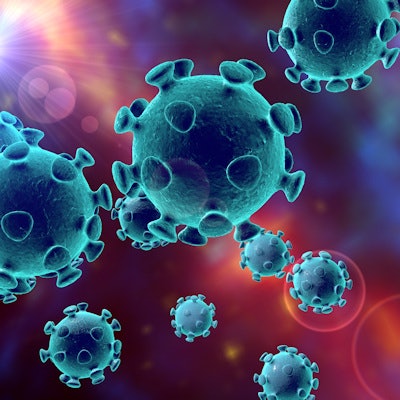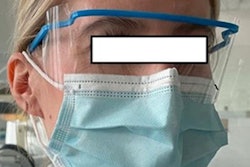
Dental procedures produce aerosols and droplets that can spread infectious disease. Local exhaust ventilation (LEV), however, can be used to control the aerosols, according to a study published recently in the Journal of Dental Research.
Researchers at Newcastle University in the U.K. used dental mannequins in a clinic, mimicking a 10-minute crown preparation and a 10-minute full-mouth ultrasonic scaling. Optical particle counters measured aerosol particles with and without an LEV device.
"This study shows that the effect of LEV was substantially greater than suction alone for the air-turbine and was similar to the effect of suction for the ultrasonic scaler," stated Eric Reynolds, president of the International Association for Dental Research (IADR), in a press release about the study.
The safety of aerosol-generating procedures is an issue within the healthcare landscape and especially relevant during infectious disease outbreaks, such as the current COVID-19 pandemic. To better understand transmission, lead study author Dr. James Allison and colleagues looked at the effects of LEV on aerosols and droplets that result from dental procedures (J Dent Res, November 10, 2021).
The team used optical particle counters (OPCs) to measure aerosol particles, liquid cyclone air samplers, and an LEV device with high-efficiency particulate air (HEPA) filtration. Windows and doors were closed, and only the operator and assistant were in the experimental area.
The operator and assistant performed the experiments on a dental simulator. The mannequin had model teeth and was attached to a dental chair.
Instruments sampled the air every five seconds starting two minutes before the procedure and for 20 minutes after. The liquid cyclone air samplers were placed in four positions during the experiment.
Using LEV decreased aerosols by 90% from the air turbine handpiece and by 99% for the ultrasonic scaler within half a meter, the authors found. Larger droplets, meanwhile, were reduced by 95% within half a meter. Particle counts were also lower when further away.
The study was not without shortcomings. It did not assess the practicality of using LEV or patients' acceptance of the device, and it did not model actual patients' respiratory activities. Future studies should use biological tracers, according to the authors.
"While no mitigation measure alone will completely eliminate risk, LEV appears to be a useful approach, which, in addition to other measures, substantially reduces dispersion of aerosols and therefore risk of exposure to pathogens. ... LEV therefore shows promise in reducing aerosols from dental procedures and should play a role in reducing risks from dental bioaerosols," the authors wrote.



















